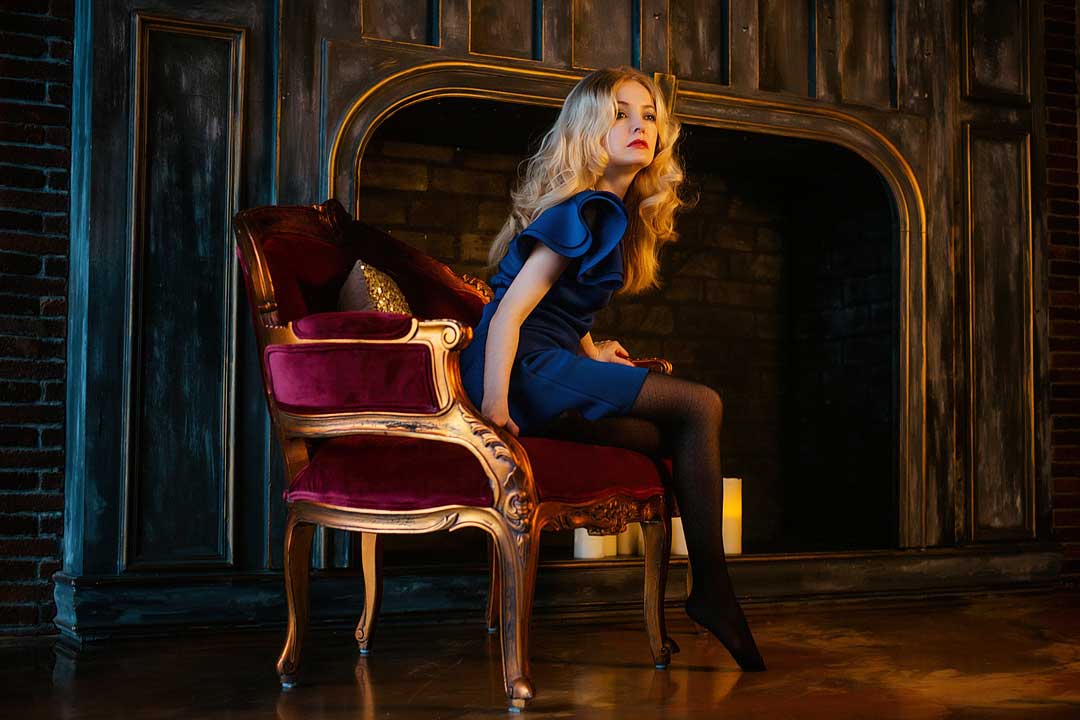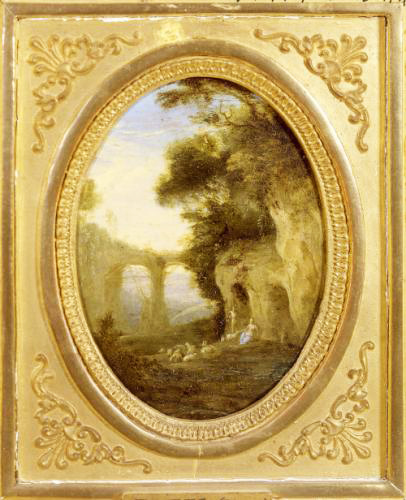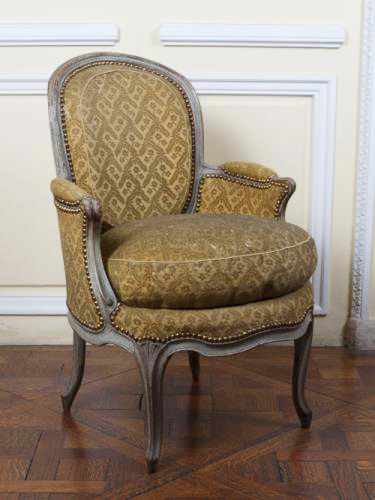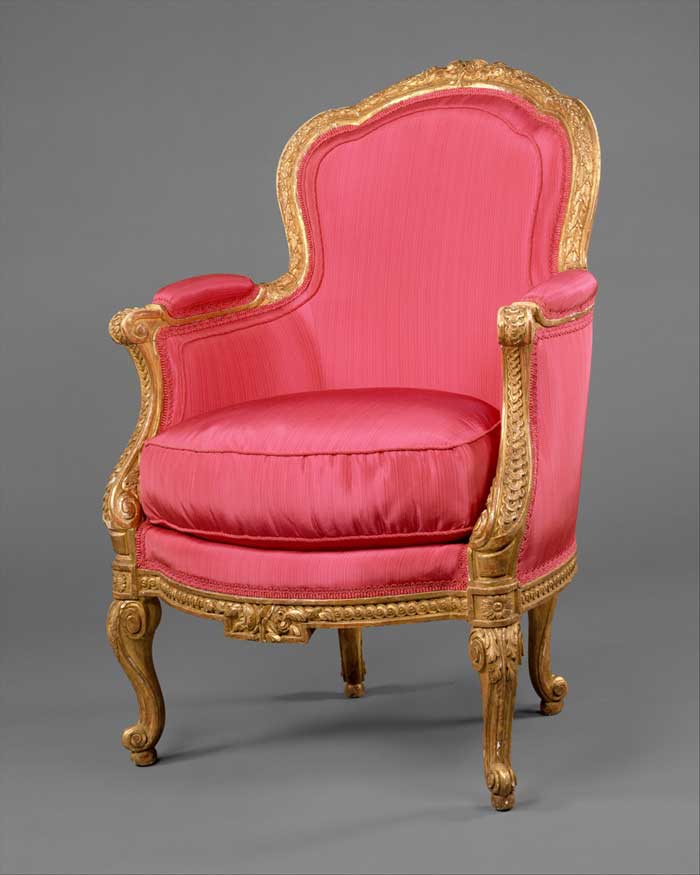The bergère chair and its variations

There is no other piece of furniture that defines traditional French interior design better than the bergère chair (“chaise bèrgere”). It is suitable for a country house, a hotel, a château or even a palace. The name is often capitalized, but there is really no good reason for that: if you are thinking that this magnificent seating device is named after some clever Frenchman by the name of Bergère you are quite wrong. The word actually means “shepherdess.” So, chaise bergère means nothing else but “shepherdess chair.” Intrigued? Confused? Ok, let’s take care of the name first.
Where did the name of this chair come from?

In the early 18th century, the notion of a simple life lead by idyllic shepherds became popularized in paintings and elements of home décor. This idea of pastoral happiness was not new, it has been developed in Ancient Greek poetry, perfected by Virgil in his Bucolics and perhaps even experienced certain Biblical influenced (remember the shepherds often mentioned around Christmas time?). The 18th century saw yet another upheaval of this trend, partially caused by the development of Classicist esthetics. Painters and writers of the time (once more) came to believe that there is nothing better in art and literature than what the Greeks and the Romans have done. Although the characters in bucolic landscapes did not use much furniture, picturesque medallions with these themes richly adorned the walls of 18th century homes. The upholstery of early bergère chairs also often depicted scenes with young shepherdesses, either contemplating happy thoughts in solitude or conversing with handsome young men clad in hides and holding staffs. This imagery was enough to create a link between the popular style of furniture with a popular motif in art. Of course, centuries later, most chairs of this design do not have fancy medallions with pastoral scenes. As a result, the original meaning of the term is often forgotten and it is not translated into foreign languages as it perhaps could be.
What is bergère chair?

If you consider most of the chair designs from previous epochs you will notice that while practical these furniture pieces were rarely comfortable (even though many early chairs are indeed works of art). The bergère chair became popular because it provided extreme comfort using thick wide cushions, upholstered armrests (sometimes padded) and a back high enough for reclining. Bergère chairs are notably enclosed chairs, which means that the sides are fully uphostered. This creates additional comfort by keeping cold air at bay. It may be argued that emotional comfort is also increased for those who might be self-conscious about their derrières. Enclosed design also allowed to keep those oversized cushions in place and preserved their shape better. Another striking feature of these chairs is their partial upholstering which allows for exposed wooden frame parts that can be carved and painted (sometimes guilded or waxed). The contrast between the wood and the upholstery creates additional visual appeal and makes it easier to place a bergère in a variety of settings, conforming to different design objectives. Bergère chairs are comfortable, elegant and versatile. No wonder they have been used in so many decor styles: Rococo, Régence, Directoire, Empire… And they still are an outstanding choice of furniture in modern times.
Types of bergère chairs
The popularity of bergère chairs and their constant adaptation to changing fashions inevitably created numerous styles. Many of them have received their own proper names, but only a few a commonly known outside of the professional audience. The list below may very easily the most complete list of bergère types, but only a handful of these styles will also be discussed separately.
- Bergère Marie-Antoinette: without sides attached to the back which is very slightly curved.
- Bergère à gondole: rounded back without sides.
- Bergère à oreilles (or à orillons): featuring prominent sides attached to the back (“the ears”), also called “bergère en confessionnal,” confessional bergère. Presumabely these chairs could be used for church confessions, because they hid the face of the person sitting in it. Another practical use of these sides was to shield one near the heat of the fire or drafty windows.
- Bergère à lambrequin: the profile of the back resembles a shepherd’s crook.
- Bergère montgolfière (also bergère Pompadour): curved armrests and rounded back.
- Bergère à chapeau: the top of the back features a distinct decorative element, it is not single curve.
- Bergère voyeuse (bergère ponteuse): chairs of this type feature a ledge at the top of the back. The two terms describing these chairs are curious. Voyeuse is a feminine form of voyeur which in this context means ‘an onlooker.’ Somebody could stand behind the chair, resting and observing the room or perhaps reading the book that the person sitting in the chair holds. The word is feminine because, remember, Bergère means “shepherdess.” The other term, ponteuse, refers to a participant in game of cards who is only making bets. As a result, this person does not need to be sitting down at a table. Many designs for such curious chairs existed in the past, other than the bergère, and one wonders if at some point this sort of “gaming chair” might make a comeback, as people often enjoy watching others play videogames.
- Bergère à la turque: the “Turkish” variation is a hybrid between a chair and a duchesse which was designed for reclining rather than sitting.
- Bergère d’officier: “an officer’s bergère,” featuring a back with a straight top, the supporting elements of the armrests curve inwards in the direction of the back. Animal figures often adorn the points of the armrests.
- Bergère à dôme: with the top of the back turning into a semi-sphere.
- Bergère à la Reine: the Queen’s bergère. The reason behind the royalty connection is obscure, but the style features a straight back. These chairs are wide (great for ladies in elaborate dresses) and tall, with high armrests.
- Bergère en cabriolet: a rather low chair, with a low rounded back.
- Bergère marquise: this style is characterized by having the armrest seamlessly connect to the back, as the frame elegantly flows in a curved line.

Many popular bergères are available as replicas. If you are an independent furniture maker these chairs may be challenging, especially if you are coming from the woodworking background, because a great deal of these chairs’ appeal comes from high quality upholstering and cushioning. But there can hardly be anything more rewarding for a chair-maker than to be a part of this grand tradition of the bergère chair.